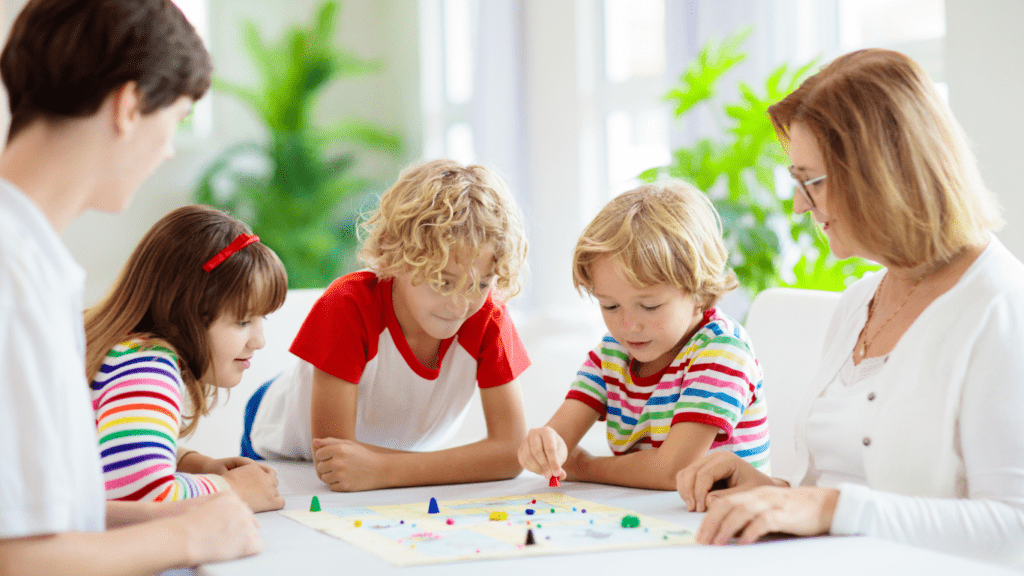As a parent, I’ve often wondered what truly helps children thrive. It’s easy to get caught up in academics, structured activities, and endless to-do lists, but one essential piece often gets overlooked—play. Play isn’t just about keeping kids entertained; it’s a crucial part of their growth and development.
Through play, kids explore their creativity, build problem-solving skills, and develop emotional resilience. It’s their way of making sense of the world around them. Whether it’s a game of make-believe or a simple outdoor adventure, these moments lay the foundation for lifelong learning and social skills.
Understanding the value of play can transform how we approach parenting. It’s not just a break from routine; it’s an opportunity to nurture curiosity, confidence, and connection. Let’s dive into why play matters and how we can encourage it in our children’s lives.
Understanding The Importance Of Play
Play acts as a foundation for children’s cognitive, social, and emotional development. It enables them to explore their world, develop skills, and build lasting relationships.
Defining Play And Its Role In Child Development
Play refers to activities initiated and engaged in by children to bring joy, develop creativity, and practice problem-solving. It plays a defining role in how children process emotions, learn to think critically, and build their self-confidence. Structured play, like board games, encourages critical thinking, while unstructured play, such as free outdoor exploration, fuels imagination. Research from the American Academy of Pediatrics highlights that play improves brain development by fostering language skills and executive functioning. Recognizing its value shapes how I prioritize it in fostering my child’s learning process.
Types Of Play And Their Benefits
- Physical Play: Running, climbing, and sports improve physical health and motor skills.
- Social Play: Group activities like pretend play teach cooperation and communication.
- Independent Play: Drawing or building blocks enhances self-reliance and creativity.
- Imaginative Play: Role-playing nurtures problem-solving and emotional understanding.
- Constructive Play: Activities like puzzles and crafts support spatial awareness and planning.
Each type contributes to emotional well-being, cognitive gains, and social aptitude, building a well-rounded foundation for lifelong skills.
The Impact Of Play On Cognitive Development
Play actively influences how children think, learn, and understand the world. Engaging in a variety of play activities stimulates critical cognitive processes, shaping their problem-solving, creativity, and decision-making abilities.
Encouraging Problem-Solving Skills
Problem-solving skills emerge through exploratory and goal-oriented play. Tasks like puzzles, building blocks, and strategic games require children to analyze, plan, and adapt. While piecing together a puzzle, children must identify patterns and test different combinations. Strategic games, such as chess or memory challenges, encourage logical thinking and forward planning. These activities reinforce neural connections associated with reasoning and adaptability.
Play with peers also fosters collaborative problem-solving. Group activities, like team scavenger hunts or role-playing scenarios, promote negotiation, perspective-taking, and collective decision-making.
Enhancing Creativity Through Imaginative Play
Imaginative play unlocks creativity by encouraging abstract and symbolic thinking. Activities where children act out scenarios—such as pretending to be a chef, astronaut, or shopkeeper—let them explore roles and responsibilities beyond their experiences. This type of play develops language skills, as children narrate roles and interact with others while expanding vocabulary and expressive capabilities.
Creating art or engaging in open-ended activities like crafting or storytelling nurtures divergent thinking. In a crafting session, for instance, transforming basic materials into unique creations enhances their ability to see multiple solutions to a problem. This fosters innovative thinking, providing mental tools transferable to academic and social contexts.
How Play Supports Emotional And Social Growth

Play lays a foundation for children’s emotional and social development by fostering self-awareness, empathy, and collaboration. It provides opportunities to navigate emotions, form connections, and practice interpersonal skills that contribute to long-term growth.
Building Emotional Resilience
Play acts as a safe space for children to explore and regulate their emotions. Through role-playing or imaginative activities, they process feelings like frustration, fear, or excitement in manageable contexts. For instance, acting out scenarios where they experience minor setbacks helps them learn how to adapt and recover.
Unstructured play encourages problem-solving within emotional challenges. Activities such as navigating a difficult puzzle or losing in a friendly game offer experiences in perseverance and coping with disappointment. According to research from the National Institute for Play, these experiences strengthen emotional resilience, enabling children to handle future stressors effectively.
Developing Social Skills And Teamwork
Interacting with peers during play promotes essential social behaviors. Group activities such as building blocks or playing tag encourage skills like taking turns, sharing, and effective communication. These situations give children the chance to practice resolving conflicts and compromising.
Collaborative games strengthen teamwork by requiring group decision-making and role allocation. For example, participating in team sports fosters a sense of responsibility, mutual support, and leadership. The American Academy of Pediatrics highlights that peer play is critical for developing empathy and understanding others’ perspectives.
Play In Different Age Groups
Play evolves with age, shaping children’s development at each stage. Recognizing these differences helps in supporting their growth effectively.
Play And Infants: Early Exploration
Infants engage in sensory play to explore their environment. Activities like:
- reaching for objects
- shaking rattles
- feeling different textures
stimulate sensory perception and motor skills. Infants also benefit from interactive play, like peek-a-boo and clapping games, which foster emotional connection and early communication skills. Simple age-appropriate toys help improve hand-eye coordination as infants begin understanding cause-and-effect relationships.
Play In Toddlers And Preschoolers: Learning Through Interaction
Toddlers and preschoolers explore more interactive and imaginative play. Toddlers often engage in parallel play, sitting near others and observing while playing independently. This progresses to cooperative play in preschoolers, such as building blocks together or pretend play. During this stage, problem-solving games like matching shapes enhance cognitive development, while creative play, such as drawing or crafting, supports self-expression. Social interactions during group play improve sharing and negotiation skills.
How Play Evolves In School-Aged Children
School-aged children’s play becomes more complex and goal-oriented, often involving structured games and rules. Activities like board games and sports encourage teamwork and strategic thinking. Creative play shifts toward hobbies like music, writing, or science projects, fostering deep focus and skill mastery. Peer interactions in team sports or group activities enhance collaboration, leadership, and empathy. Competitive games also help children navigate success and failure, building emotional resilience.
Encouraging Play In A Busy World
Even with packed schedules, prioritizing play is essential for children’s growth. Simple adjustments can create opportunities for meaningful and enriching play experiences.
Balancing Structured And Unstructured Play
Incorporating both structured and unstructured play nurtures diverse developmental skills. Structured play includes activities like sports, board games, and music lessons that promote discipline, teamwork, and focus. I encourage setting specific times for these, ensuring consistency. On the other hand, unstructured play, like drawing, free storytelling, or outdoor exploration, helps children tap into their creativity and decision-making abilities. Allowing spontaneous, child-led activities ensures a balanced approach that supports well-rounded growth.
Reducing Screen Time To Promote Active Play
Limiting screen time creates space for physical and imaginative activities. According to guidelines from the American Academy of Pediatrics, children aged 2–5 should have no more than one hour of screen time per day. I suggest replacing passive screen engagement with engaging alternatives such as building blocks, outdoor sports, or role-playing games. For older children, substituting screen use during leisure hours with group activities enhances collaboration and physical health while fostering emotional connections with others.
Creating Play-Friendly Environments At Home
Designing a home space conducive to play maximizes spontaneous engagement. Setting up specific areas with age-appropriate toys, art supplies, or open floor space encourages diverse play forms. For example, I recommend using storage bins to organize materials for easy access and tidiness. Incorporating movable furniture or outdoor elements, like sandboxes or garden areas, provides room for exploratory and physical play. A welcoming and resourceful space ensures children feel inspired to initiate and sustain their play independently.





